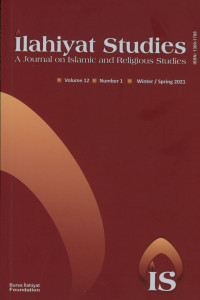Sufism, Black and White: A Critical Edition of Kitāb al-Bayāḍ wa-l-Sawād by Abū l-Ḥasan al-Sīrjānī (d. ca. 470/1077) edited by Bilal Orfali and Nada Saab
First paragraph: Most of the works that constitute the earliest Sufi corpus of the 2nd/8th and 3rd/9th centuries have been lost in their original forms, leaving large gaps in the source material available to contemporary scholars carrying out research in the field. Many Sufi concepts can only be examined in the works of later authors, such as al-Sarrāj (d. 378/988), al-Kalābādhī (d. 380/990), al-Makkī (d. 386/996), Abū Nuʿaym (d. 430/1039), al-Qushayrī (d. 465/1074), and al-Hujwīrī (d. ca. 465/1072). Orfali and Saab’s edition of Abū l-Ḥasan al-Sīrjānī’s 5th/11th century collection of early Sufi sayings, Kitāb al-bayāḍ wa-l-sawād min khaṣāʾiṣ ḥikam al-ʿibād fī naʿt al-murīd wa-l-murād, is one of the sources in this category that can be used to reflect and reconstruct the earliest treatments of Sufi concepts and figures.
Sufism, Black and White: A Critical Edition of Kitāb al-Bayāḍ wa-l-Sawād by Abū l-Ḥasan al-Sīrjānī (d. ca. 470/1077) edited by Bilal Orfali and Nada Saab
First paragraph: Most of the works that constitute the earliest Sufi corpus of the 2nd/8th and 3rd/9th centuries have been lost in their original forms, leaving large gaps in the source material available to contemporary scholars carrying out research in the field. Many Sufi concepts can only be examined in the works of later authors, such as al-Sarrāj (d. 378/988), al-Kalābādhī (d. 380/990), al-Makkī (d. 386/996), Abū Nuʿaym (d. 430/1039), al-Qushayrī (d. 465/1074), and al-Hujwīrī (d. ca. 465/1072). Orfali and Saab’s edition of Abū l-Ḥasan al-Sīrjānī’s 5th/11th century collection of early Sufi sayings, Kitāb al-bayāḍ wa-l-sawād min khaṣāʾiṣ ḥikam al-ʿibād fī naʿt al-murīd wa-l-murād, is one of the sources in this category that can be used to reflect and reconstruct the earliest treatments of Sufi concepts and figures.
